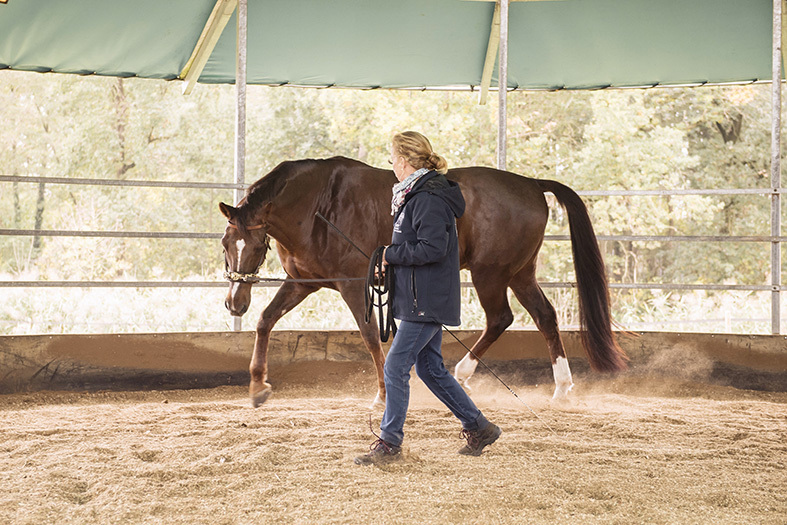The secret behind biomechanics
Our long-standing experience shows that the anatomical and biomechanical rhythm of the flight animal with its natural reactions to external effects has a central significance during the training of a riding horse.
This begins among others with the eyes. They send a signal of danger to the brain – in the process the eye muscles play a significant role (an article on the subject will be published shortly by Tina Wassing, veterinarian of the ARR center). A reaction is triggered by the muscles which have to react in a situation of danger because the brain is sending the received information forward to the muscle which triggers the flight reaction: the trapezius muscle. This muscle causes blocking on the forehand which on the other hand enables the high stretching of the neck and the head. Thereby the upper body (the torso) will be pressed down. The outcome is a clear stress behavior with an increased adrenalin production.
This absolutely normal behavior forces the horse – also in the wild – to standstill. In other words: Picking up the sent is only been done in standstill!

What does that mean for the training of a riding horse? The horse established this natural behavior and out of that the resulting reactions because of its anatomy and biomechanics. But this base is unfortunately not taken into account during a reasonable training. If we force the horse – without changing the just explained biomechanics of the flight animal – into a forward-downward or into a too strong forward movement we will land on the forehand and trigger the natural reaction of the trapezius muscle, the stress muscle.
Horses will not understand why they are run in a situation in which they have the genetically reaction imprinted to stand still. They freeze, get tense and put stress on their skeleton. The metabolism reacts: it reduces! The result of all this: a lot of horses end up in medical treatment because understanding for this reaction is missing during training!
That’s why we from the center of ARR set up the 2-step-education. With a reasonable transformation of the biomechanics of the flight animal everything will come together as a self-supporting athlete. The biomechanics of the horse can be therefore divided into two clearly defined structures: First of all the structure of the flight animal, as described above, and the structure of the athlete who can only react in a healthy and positive way when he masters the elements of his body which needs to carry himself. Behind all this hides the secret of a horse- and health-friendly training for riding horses.
During the first step of the ARR education – the preparation on the ground – the horse must get the awareness of its mainstay and its free leg. As the natural crookedness represents the diagonal shift of the negative region (more about that under «ARR») is the diagonal also the key to a positive change. But to reach this long known goal suitable equipment needs to be chosen. From us recommended cavesson has been proven to be most effective for changing the biomechanics. A line of new developed cavessons are too light and they won’t allow enough diagonal improvement because they shift too much on the nose.
